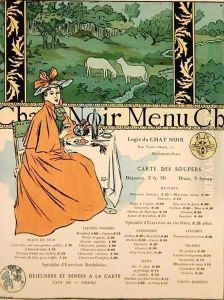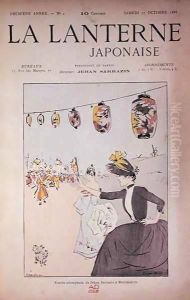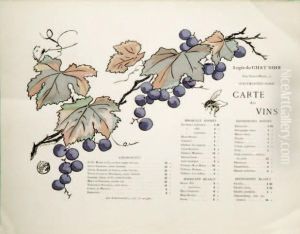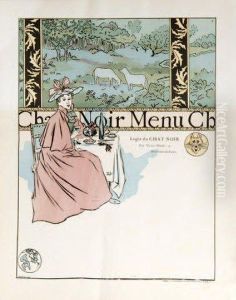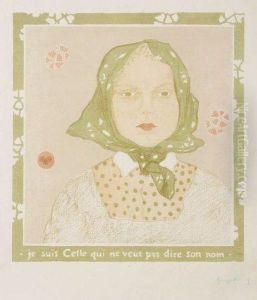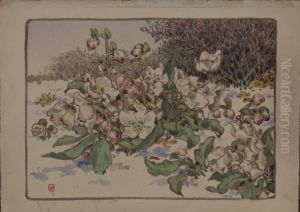Georges Auriol Paintings
Georges Auriol, born Jean-Georges Huyot on April 26, 1863, in Beauvais, France, was a graphic artist, type designer, and songwriter known for his contributions to the Art Nouveau movement. Auriol emerged in the vibrant artistic scene of late 19th-century Paris, where he initially worked as a songwriter and actor in the Montmartre district, a hub for bohemian artists and intellectuals.
Auriol developed a strong interest in graphic arts and began his career in this field by providing illustrations for various magazines, including 'Le Courrier français,' a popular weekly satirical magazine. His work caught the attention of the influential art dealer and publisher Siegfried Bing, who played a significant role in promoting the Art Nouveau style. Through Bing’s gallery, Maison de l'Art Nouveau, Auriol's designs reached a wider audience and contributed to the proliferation of the style.
Auriol's distinctive graphic style was characterized by sinuous lines, floral and organic motifs, and an innovative approach to typography. He became one of the first artists to create typefaces in the Art Nouveau style, blending traditional typographic forms with decorative elements that reflected the era's aesthetic. Among his most famous type designs are Auriol and Auriol Champlevé, which exemplify the fluidity and ornamentation of Art Nouveau.
In addition to his typographic work, Auriol designed numerous book covers, posters, and logos, including the iconic logo for the magazine 'La Plume.' His designs embodied the spirit of the Belle Époque and the Parisian avant-garde. Auriol's multifaceted career also included set and costume designs for the theater, reflecting his continued engagement with the performing arts.
Despite his success, Auriol's name is often overshadowed by other Art Nouveau masters such as Alphonse Mucha and Hector Guimard. Nevertheless, his contributions to the realm of graphic design and typography have left a lasting legacy.
Georges Auriol passed away on February 2, 1938, in Paris. Today, his work is remembered for its elegance and creativity, and his typefaces continue to influence designers looking to capture the essence of Art Nouveau.
